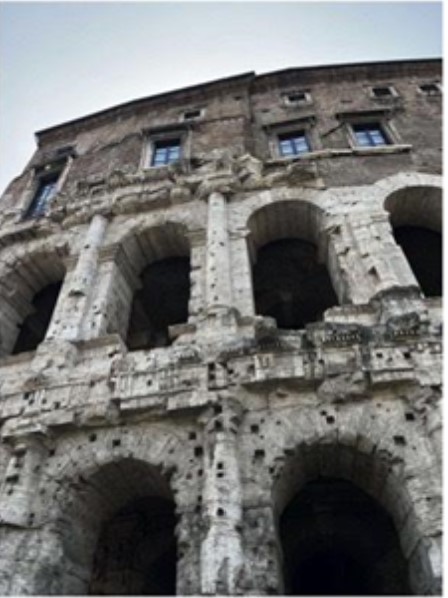Tags
Alex Eckhart, BGSU, BGSU History, BGSU Study Abroad, Casey Stark, Jo Enger Arthur Scholarship for Study Abroad, Roma Aeterna, Rome, Temple of Apollo Sosianus, Theater of Marcellus, Undergraduate
By: Alex Eckhart, BGSU Roma Aeterna 2023 Student
Within the Campus Martius in the northern area of Rome in the former Circus Flaminius lies the Theater of Marcellus. Construction on the theater was begun by Gaius Julius Caesar as a rival to the Theater of Pompey in the southern section of the Campus Martius, but it was not completed until 13 BCE by his successor and adopted son, Augustus. Augustus dedicated the massive structure to his nephew and son-in-law Marcus Claudius Marcellus, who had been his heir until his unfortunate death at the age of 19 in 23 BCE. On the Res Gestae Divi Augusti (Deeds of the Divine Augustus), the official autobiography carved into columns that Augustus had built that proclaims all of his victories and projects for the people of Rome, it says, “I built the theater adjacent to the temple of Apollo on ground in large bought from private owners, and provided that it should be called after Marcus Marcellus, my son-in-law” (Augustus and Bushnell 1998, 21). In order to build such a massive amphitheater, the Temple of Apollo Sosianus was moved several meters away from its original location. The theater is estimated to be able to hold anywhere from 11,000 to 40,000 people, and was in a prime location between the Circus Flaminius and the temple, making it one of the most important amphitheaters in Rome (Claridge et al 2010, 243). It would hold games and festivals for the people, including the Secular Games, which was one of the ludi (Roman celebrations) that involved games and sacrifices. These games were annual, and were held in the amphitheater several years before it had been officially inaugurated. Another of the ludi, the Ludi Apollinares, was held at the nearby Temple of Apollo Sosianus.
Continue reading
